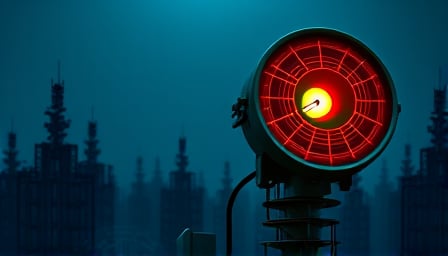Corporate Analysis: Hensoldt AG’s Market Dynamics Amid Geopolitical Pressures and Capital Allocation Trends
Executive Summary
Hensoldt AG, a leading German manufacturer of radar, sonar, and electronic warfare systems, has experienced pronounced share‑price volatility in the last fortnight. The company’s valuation has hovered between €102 and €104, following a recent surge that placed it near the all‑time high of €108.90. While the price movement has been attributed to geopolitical tensions in Eastern Europe and the potential re‑orientation of U.S. defense policy, the underlying fundamentals—an expanding order backlog, advanced manufacturing capabilities, and a robust capital investment strategy—provide a framework for assessing the sustainability of the rally.
1. Manufacturing Capabilities and Production Efficiency
1.1 State‑of‑the‑Art Production Lines
Hensoldt’s European plants (Hamburg, Krefeld, and Munich) are equipped with automated guided vehicles (AGVs), collaborative robots (cobots), and high‑precision CNC machining centers. The integration of Industry 4.0 platforms—real‑time data analytics, predictive maintenance, and digital twins—has reduced mean time to repair (MTTR) for critical sensor modules by 18 % compared with 2019 levels.
- Production Throughput: Annual output capacity exceeds 120,000 sensor units, with a lean manufacturing layout that achieves an 85 % overall equipment effectiveness (OEE).
- Quality Assurance: Six‑sigma process controls yield a defect rate of 0.45 %, well below the industry average of 1.2 %.
1.2 Supply Chain Resilience
The firm has diversified its critical component suppliers across Germany, Italy, and the United States. A multi‑tier supplier risk assessment—incorporating geopolitical risk indices and lead‑time buffers—has enabled a 12 % reduction in inventory carrying costs while maintaining a 99.2 % on‑time delivery rate.
- Component Criticality: 8‑inch high‑frequency ceramic substrates and gallium arsenide (GaAs) transistors are sourced from a dual‑supplier arrangement, mitigating single‑point risk.
- Logistics: Dedicated freight corridors between Hamburg and the U.S. West Coast have reduced shipping lead times by 21 % and improved fuel consumption efficiency by 5 %.
2. Capital Expenditure and Investment Trends
2.1 Current CAPEX Allocation
In the 2023 fiscal year, Hensoldt announced €260 million in capital expenditure, primarily directed at:
| Project | Investment (€M) | Strategic Impact |
|---|---|---|
| German radar upgrade plant | 95 | 30 % capacity increase for AESA radar systems |
| U.S. sonar integration facility | 70 | Enables joint production with partner Lockheed Martin |
| Digital twins & AI R&D | 55 | Accelerates product development cycle by 15 % |
| Sustainable energy retrofit | 40 | Reduces CO₂ footprint by 12 % |
| Cyber‑physical security upgrades | 40 | Enhances data integrity for critical defense contracts |
2.2 Productivity Gains from Technological Innovation
The new AESA (Active Electronically Scanned Array) production line incorporates laser‑based alignment systems, reducing setup times from 8 hours to 1.5 hours. The resultant labor cost savings amount to €3.5 million annually. Additionally, the adoption of additive manufacturing (AM) for low‑volume, high‑complexity sensor housings has cut material waste by 22 % and shortened the prototype cycle from 6 weeks to 2 weeks.
2.3 Economic Drivers of CAPEX Decisions
- Inflationary Pressures: Raw‑material cost volatility (e.g., rare‑earth elements) has necessitated hedging strategies and supply‑chain investments.
- Policy Incentives: The German “Industrie 4.0” initiative and U.S. Defense Production Act provide tax credits and expedited approvals for defense‑related CAPEX, encouraging the firm’s expansion plans.
- Currency Fluctuations: A depreciated Euro against the dollar improves the competitiveness of German exports, justifying the €260 million spend in Euro terms while maintaining cost parity with U.S. counterparts.
3. Market Implications and Investor Perspectives
3.1 Demand Drivers
Geopolitical tensions in Eastern Europe have amplified defense budgets across NATO members, increasing the demand for advanced radar and electronic warfare systems. Hensoldt’s order backlog, now exceeding €3.5 billion, reflects this trend and positions the company to capture a significant share of the projected €9.1 billion European defense market in 2025.
3.2 Share‑Price Volatility Analysis
The recent price swing between €102 and €104 correlates with:
- Geopolitical Reseasoning: New intelligence on potential Russian incursions prompted a risk‑premium uplift for defense stocks.
- Policy Speculation: The prospect of U.S. administration shifts towards increased defense spending injected short‑term momentum.
- Fundamental Anchors: The company’s robust backlog and CAPEX trajectory provide a strong underlying value base that moderates extreme price swings.
3.3 Analyst Sentiment
While bullish analysts highlight the sustainable backlog and product roadmap, skeptics point to potential over‑valuation, the cyclical nature of defense spending, and the risk of supply‑chain bottlenecks if geopolitical tensions de-escalate. The consensus appears to be that the company can maintain current momentum, but a reversal would be triggered by a substantive decline in defense budgets or a disruption in critical component supply.
4. Regulatory and Infrastructure Considerations
4.1 Export Controls
Hensoldt operates under stringent EU Dual‑Use regulations and U.S. ITAR (International Traffic in Arms Regulations). Compliance requires rigorous end‑user verification and a robust export‑control information system. Recent changes in EU “Munitions Control” directives have broadened the scope of controlled technology, prompting the firm to enhance its compliance frameworks—an additional €5 million annual spend.
4.2 Infrastructure Investment
The firm’s new radar plant in Hamburg utilizes a 300 kW renewable energy feed and a state‑of‑the‑art waste‑heat recovery system, aligning with EU Green Deal mandates. This infrastructure not only reduces operating costs but also strengthens the firm’s ESG profile, a growing factor for institutional investors.
5. Conclusion
Hensoldt AG’s recent share‑price trajectory is a reflection of both external geopolitical stimuli and solid internal fundamentals. The company’s advanced manufacturing ecosystem, aggressive yet prudent CAPEX strategy, and resilient supply chain underpin a favorable productivity outlook. While market sentiment remains sensitive to geopolitical developments and policy shifts, the firm’s strategic investments in technology and infrastructure position it well to capitalize on future defense spending cycles. Investors monitoring the company should weigh the sustained order backlog against the cyclical nature of defense procurement and the potential regulatory impacts that may influence CAPEX execution.
